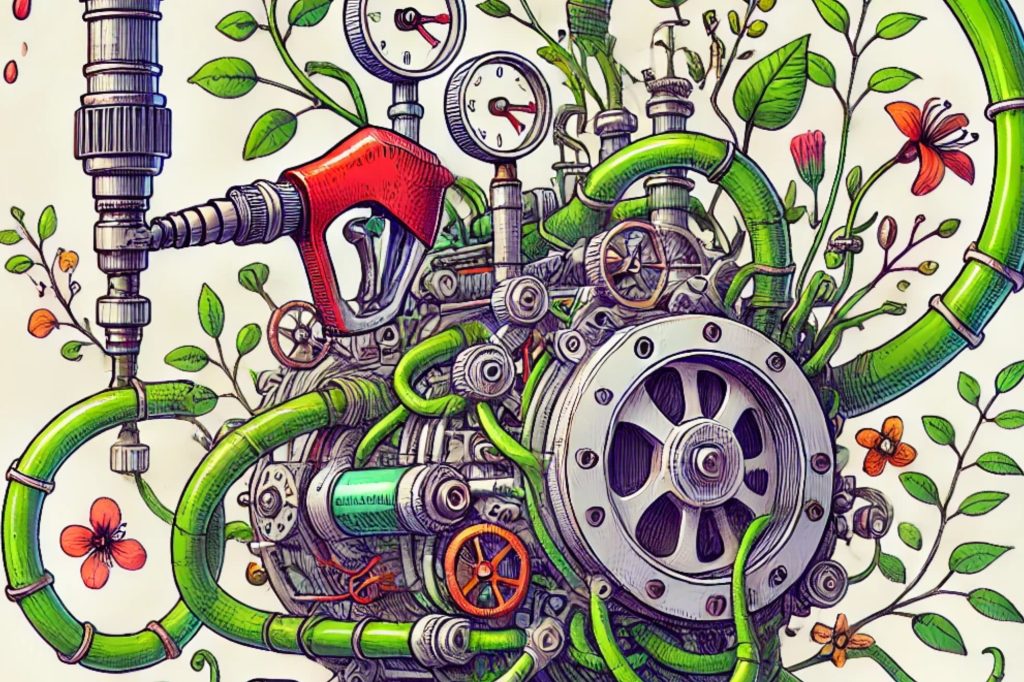Chapter 5: Potassium

In high-performance engines, the fuel pump ensures the right amount of fuel reaches the combustion chamber. The transmission, meanwhile, adapts engine output to match driving conditions. Without these components, you’d flood the engine, stall out, or fail to get any power to the wheels.
In plants, potassium plays both of these roles. It moves the fuel – water and nutrients – through the plant and adjusts metabolic output in response to real-time needs. It doesn’t supply energy directly, but it determines how and where energy flows.
Potassium = Flow Control
Potassium’s primary function is to regulate osmotic pressure inside plant cells. That means it controls the movement of water. Where potassium goes, water follows – and with it, everything water can carry: nutrients, metabolites, and signaling molecules.
This flow is essential for transporting the ingredients of photosynthesis to the chloroplasts and for distributing the products of photosynthesis throughout the plant. It’s also critical for opening and closing stomata, which regulate both CO₂ intake and water loss.
Think of potassium as a fuel pump, maintaining the right flow rate to match environmental conditions and metabolic demand.
Precision Under Pressure
A high-performance engine must respond quickly to changes in terrain, speed, and load. That’s what a transmission is for: translating engine output into usable motion under variable conditions.
Potassium behaves the same way. It activates enzymes, modulates membrane potential, and helps the plant respond to light, drought, nutrient availability, and internal developmental cues. By adjusting how open or closed ion channels are, potassium determines the pace and direction of key processes in real time.
That includes triggering stomatal responses to light or drought, balancing pH and charge within cells, and managing the accumulation of organic acids – some of which serve as stored energy or building blocks for secondary metabolism.
Supporting the OEC: The True Combustion Chamber
One of potassium’s most elegant roles is delivering water to the oxygen-evolving complex (OEC) – the true combustion chamber of the plant engine. Here, water is depressurized (“split” in the conventional terminology) into protons, electrons, and oxygen. This reaction is the spark-to-fuel moment of photosynthesis.
Without potassium, water doesn’t reach the OEC efficiently. And without that water, the entire photosynthetic engine stalls. It’s like having a combustion chamber with no fuel injector.
Dynamic Load Balancing
Potassium helps plants shift gears. Under stress, potassium mediates changes in respiration, growth rates, and hormone responses. It enables plants to pivot – toward defense, reproduction, or resource conservation – based on real-time feedback.
In this way, potassium is more than a pump. It’s an intelligent transmission system, redirecting metabolic traffic in response to changing terrain.
The Takeaway
Potassium doesn’t provide fuel or spark, but it ensures both are delivered and used efficiently. It manages pressure, flow, and direction – making it one of the most dynamic and adaptable elements in plant physiology.
Without it, the engine floods, overheats, or seizes.

